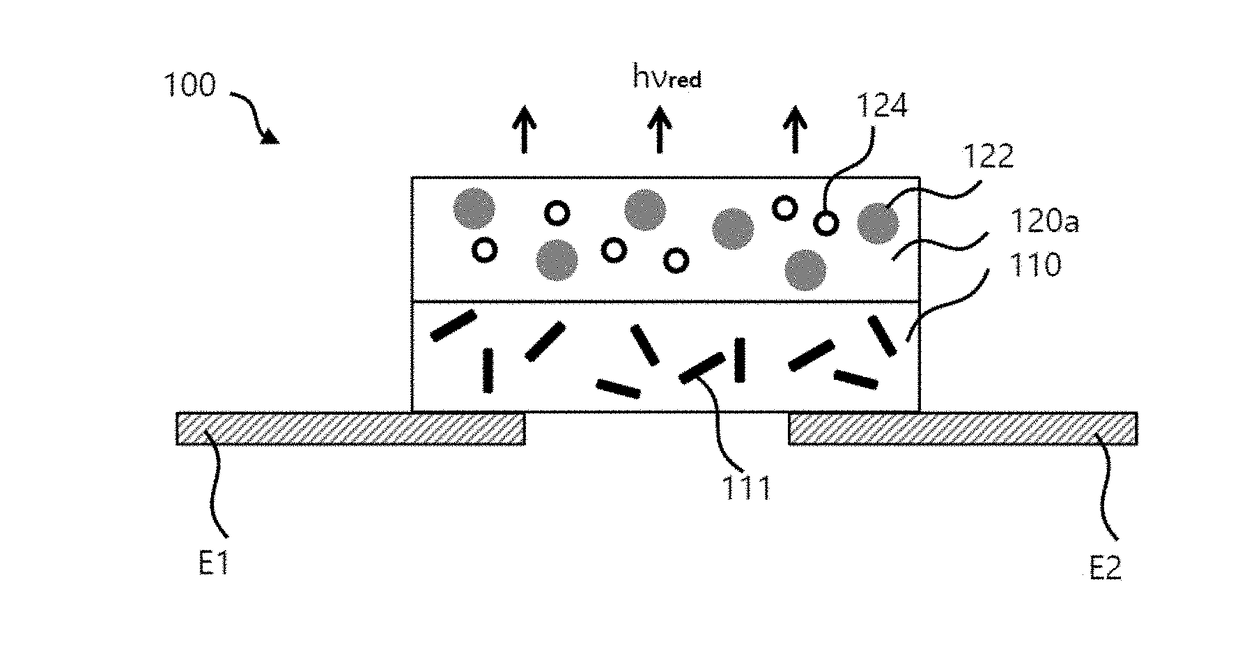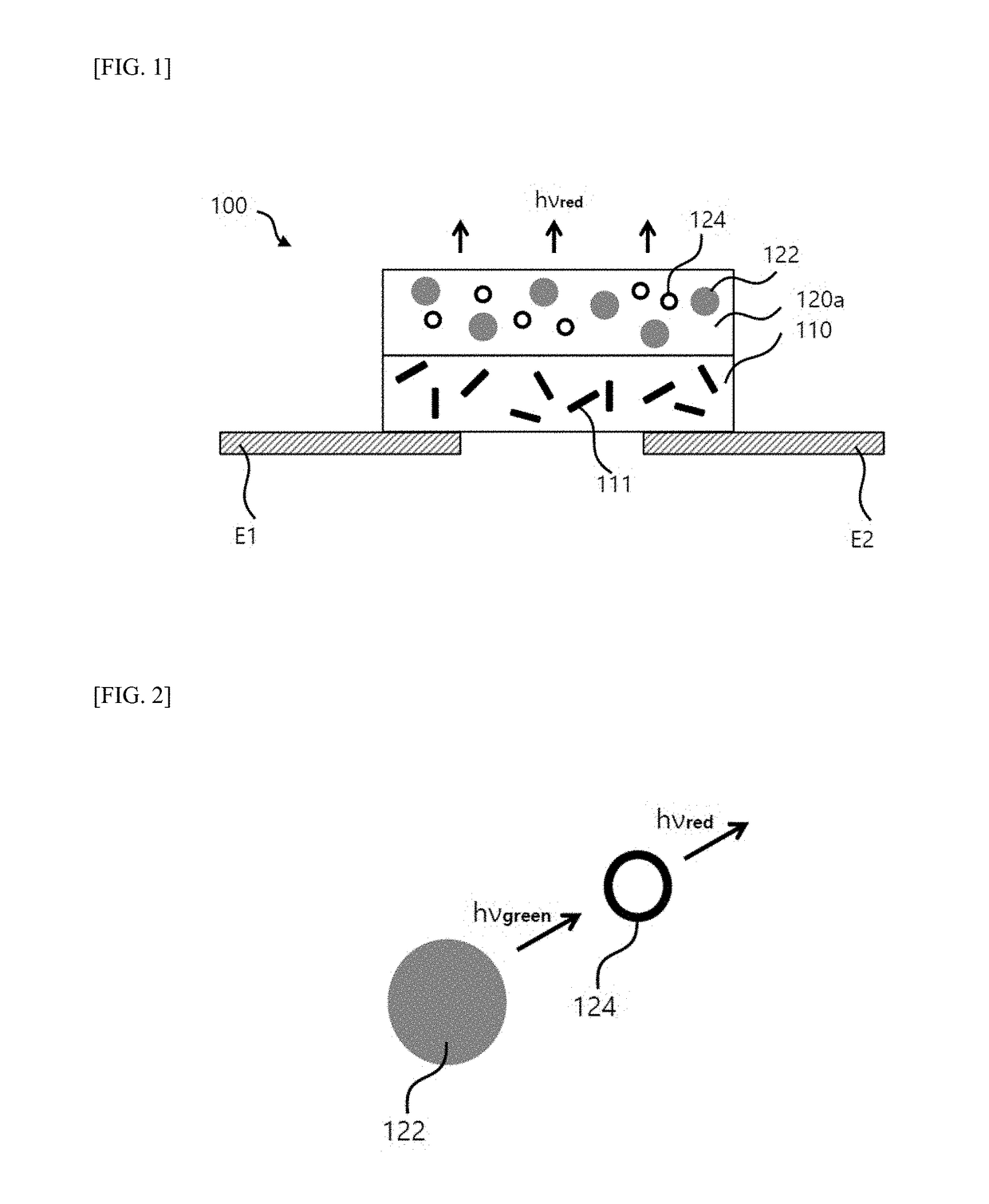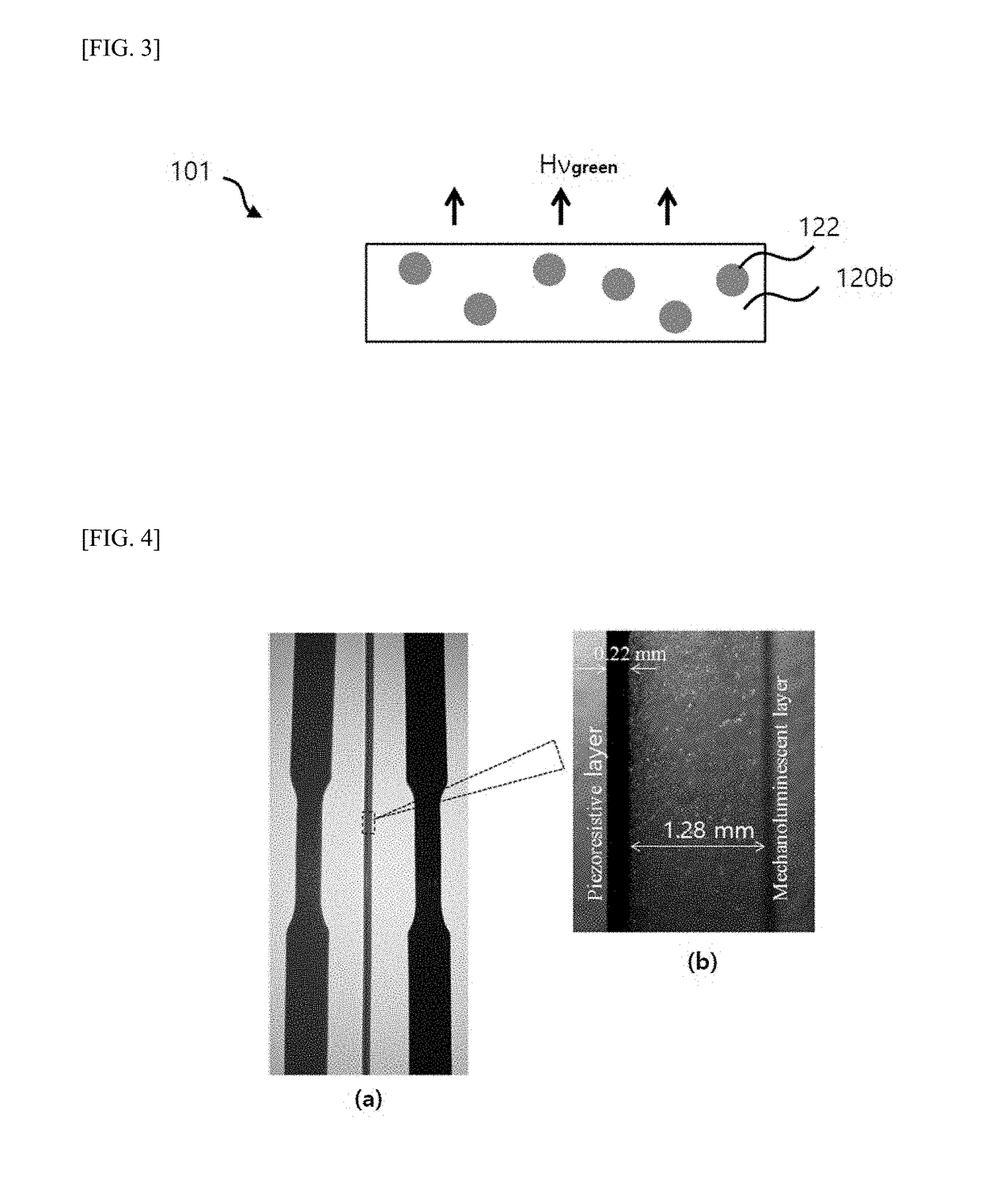Strain measurement sensor capable of indicating strain with color emission and method of manufacturing the same
a sensor and color emission technology, applied in the field of strain measurement sensors, can solve the problems of inability to realize exact red color emission of such a material, inability to meet the requirements of strain sensing of strain sensors operating through expensive equipment, and difficulty in finding a light conversion material capable of converting green emission to red emission among the entire inorganic phosphor group
- Summary
- Abstract
- Description
- Claims
- Application Information
AI Technical Summary
Benefits of technology
Problems solved by technology
Method used
Image
Examples
example 1
[0076]A strain measuring sensor in this example has been manufactured as follows:
[0077]ZnS:Cu (available from LONCO Company Limited), rhodamine B (available from Sigma-Aldrich), silica (SiO2, available from Sigma-Aldrich), carbon nanotube (CNT, available from carbon nano material Technology Co. Ltd) and PDMS (poly dimethyl siloxane, Sylgard® 184 Silicone Elastomer) are prepared. In this connection, the radius of the silica was 20 nm, and the multi-wall CNT with a radius of 20 nm and a length of 5 μm was used.
[0078](1) Preparation for Material for Mechano-Luminescent Layer
[0079]First, in order to coat the silica surface with rhodamine B, 0.1 g of rhodamine B and 10 g of silica were mixed with 200 mL of methanol and then continuously stirred at 50° C. using a magnetic stirrer. Then, the methanol was completely evaporated, such that the silica coated with the rhodamine B (silica@rhodamine B) as red powders was obtained.
[0080]Then, the silica@rhodamine B and ZnS:Cu were homogeneously mi...
example 2
[0088]The example 2 was different from the example 1 in that, for producing the mechano-luminescent layer, only ZnS:Cu was employed.
[0089]Characteristics Evaluation—1: Optical Characteristics
[0090]Six wavelengths in the range of 254 nm to 365 nm were applied to each of the mechano-luminescent layer made according to the example 1, the mechano-luminescent layer made according to the example 2 and the red emission layer for comparison respectively. Then, emission intensities emitted from the mechano-luminescent layer made according to the example 1, the mechano-luminescent layer made according to the example 2 and the red emission layer for comparison were measured respectively. The results are shown in FIG. 5.
[0091]In FIG. 5. FIG. 5(a) indicates a photoluminescence (PL) spectrum of the mechano-luminescent layer according to the example 1, and FIG. 5(b) indicates emission spectrums of the mechano-luminescent layer according to the example 2 and the red emission layer for comparison. I...
PUM
 Login to View More
Login to View More Abstract
Description
Claims
Application Information
 Login to View More
Login to View More - R&D
- Intellectual Property
- Life Sciences
- Materials
- Tech Scout
- Unparalleled Data Quality
- Higher Quality Content
- 60% Fewer Hallucinations
Browse by: Latest US Patents, China's latest patents, Technical Efficacy Thesaurus, Application Domain, Technology Topic, Popular Technical Reports.
© 2025 PatSnap. All rights reserved.Legal|Privacy policy|Modern Slavery Act Transparency Statement|Sitemap|About US| Contact US: help@patsnap.com



